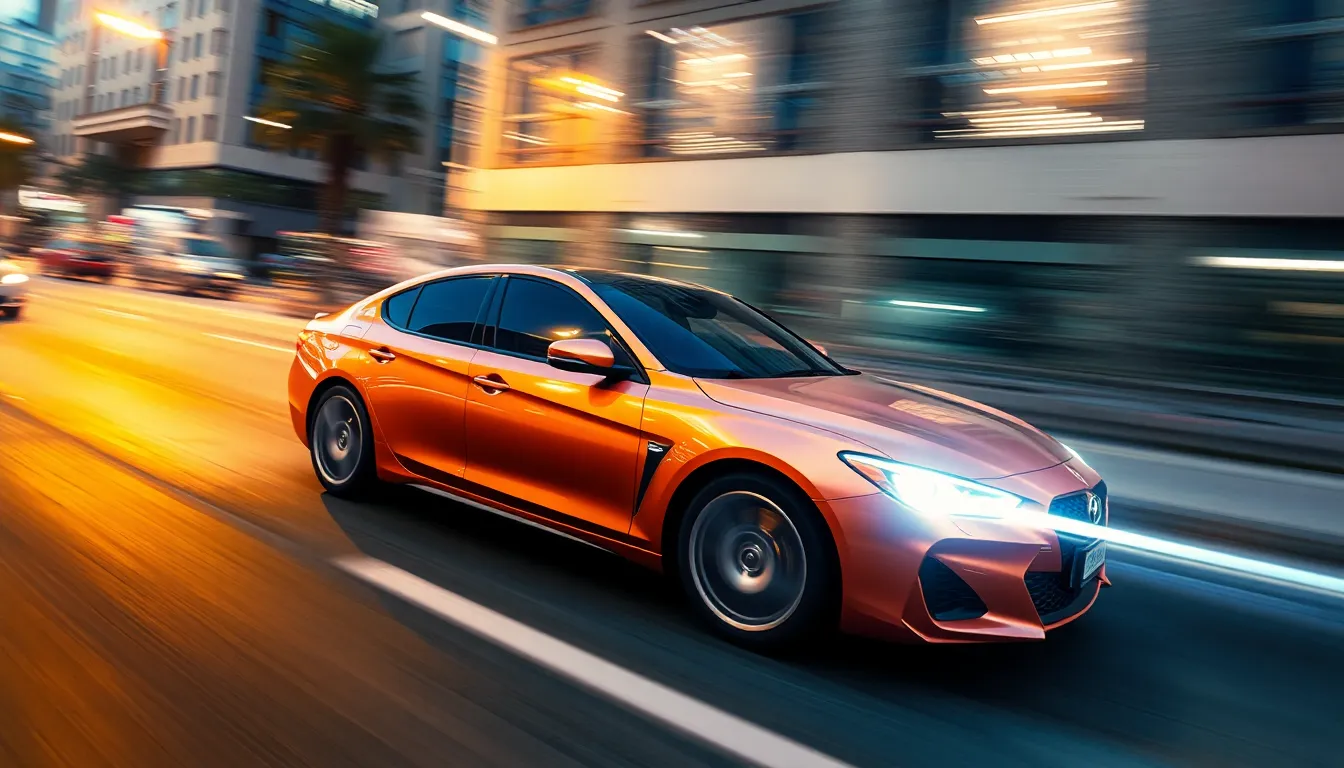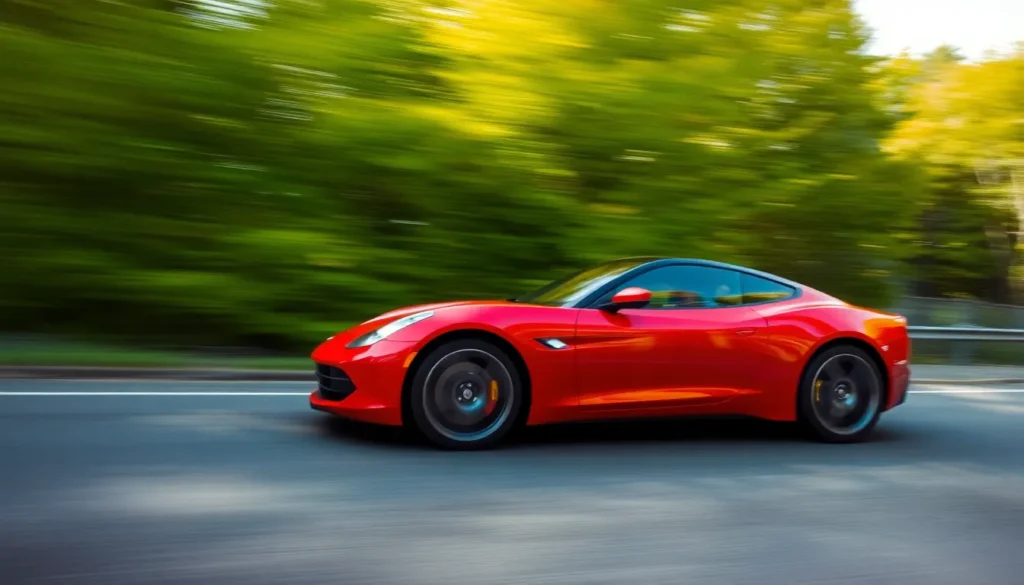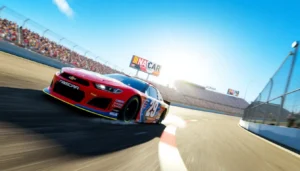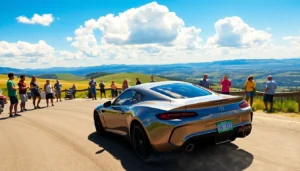Ever wondered why some driving photos look like they’re straight out of an action movie? That’s the magic of motion blur driving. It’s not just a fancy photography trick; it’s a thrilling way to capture the essence of speed and excitement on the road. Imagine zooming past the scenery while your car transforms into a blur of color and adrenaline.
Understanding Motion Blur Driving
Motion blur driving captures the exhilaration of speed in photography. This technique conveys a dynamic visual experience that immerses viewers in the sensation of movement.
Definition of Motion Blur
Motion blur refers to a photographic effect that occurs when a moving subject becomes streaked in the image. This visual phenomenon results from a slow shutter speed capturing the motion of a subject while the camera remains relatively still. Photographers often use this method to illustrate speed and motion, making it particularly effective for images of cars in motion. The blurred background highlights the subject’s velocity while maintaining a sense of context, adding depth to the photograph.
Importance in Driving
Motion blur plays a crucial role in automotive photography, enhancing visual storytelling. It creates a sense of immediacy by showing how fast a vehicle is traveling. This effect can evoke feelings of excitement and adventure, drawing viewers into the scene. Additionally, incorporating motion blur in driving photographs can emphasize the beauty of movement as it captures the essence of the driving experience. Presenting vehicles in a lively environment enriches the narrative and engages audiences, making it essential for effective automotive imagery.
Benefits of Motion Blur Driving

Motion blur driving offers several advantages that enhance both photography and simulation experiences. Capturing the essence of speed through this technique engages viewers and creates a compelling narrative.
Enhanced Realism in Simulations
Realism significantly improves in driving simulations that incorporate motion blur effects. Users experience an immersive environment, feeling as if they’re actually behind the wheel. With blurred backgrounds, the sensation of speed intensifies, accurately simulating high-velocity scenarios. Visual cues become clearer as they establish a more believable context within the simulation. Such effects allow players to engage more profoundly, enhancing their overall driving experience.
Improved Focus on Key Elements
Key elements receive enhanced focus through motion blur driving. By blurring background details, the foreground subject—often the vehicle—stands out more distinctly in photographs. This technique allows viewers to concentrate on the main action without distractions. Stressed motion creates an emotional connection to the vehicle, portraying it more dynamically. For automotive photography, this focus amplifies the sense of adventure, highlighting the exhilaration of speed while effectively communicating the narrative of the image.
Challenges of Motion Blur Driving
Motion blur driving presents significant challenges that can affect the outcome of images and driving experiences. Various factors, including potential distractions and impacts on visual clarity, play crucial roles in this technique’s application.
Potential Distractions
Distractions stemming from motion blur can detract from the intended focus of an image. Fast-moving elements in the background may confuse viewers, especially if they dominate the scene. Competing visual information often hinders the viewer’s ability to concentrate on the subject vehicle. Ambient distractions, such as pedestrians or other vehicles, also contribute to cognitive overload, making it difficult for viewers to engage with the main action. By carefully managing these distractions, photographers and drivers can enhance the overall effectiveness of the motion blur technique.
Impact on Visual Clarity
Visual clarity significantly fluctuates with motion blur driving. The technique, while visually dynamic, can obscure details of the vehicle itself. Blurring may diminish the recognition of design elements that enthusiasts appreciate. Important aspects, such as color and texture, risk fading into indistinct shapes. To counter this issue, balance between motion blur and clarity becomes essential. Photographers often find that strategic use of shutter speed is vital in preserving details while still conveying movement. Effective execution ensures that the vehicle remains the focal point, maintaining visual interest without sacrificing important elements.
Techniques to Manage Motion Blur Driving
Effective management of motion blur driving involves optimizing camera settings and practicing specific training methods. These techniques help photographers achieve the desired visual effects while minimizing distractions.
Adjusting Camera Settings
Adjusting camera settings plays a vital role in achieving optimal motion blur. Slower shutter speeds, such as 1/30 to 1/125 seconds, create the desired blur effect while capturing the moving vehicle sharply. Increasing ISO settings enhances sensitivity to light, allowing for better exposure in various lighting conditions. Utilizing a wide aperture, like f/2.8 or f/4, can emphasize the subject and maintain clarity amidst blur. Experimenting with different panning techniques also helps achieve smooth background separation. Photographers who focus on these settings ensure their images convey speed without losing essential details.
Training and Adaptation Methods
Training and adaptation methods significantly enhance a photographer’s ability to manage motion blur effectively. Engaging in regular practice helps them develop timing and coordination during panning shots. Staging mock driving scenarios enables photographers to familiarize themselves with various motion blur techniques. Engaging in workshops or online courses focuses on mastering motion blur in dynamic settings. Analyzing previous work provides insight into areas for improvement. Photographers who prioritize these training strategies cultivate skills that improve their overall proficiency in motion blur driving.
Motion blur driving stands out as a powerful technique that transforms ordinary automotive photography into dynamic visual narratives. By capturing the thrill of speed and the essence of movement, it invites viewers to experience the excitement firsthand. With the right balance between blur and clarity, photographers can create images that not only highlight the vehicle but also evoke emotions tied to adventure and freedom. Mastering this technique requires practice and an understanding of camera settings, but the rewards are well worth the effort. As photographers refine their skills in motion blur driving, they’ll find themselves better equipped to tell compelling stories through their lens.





